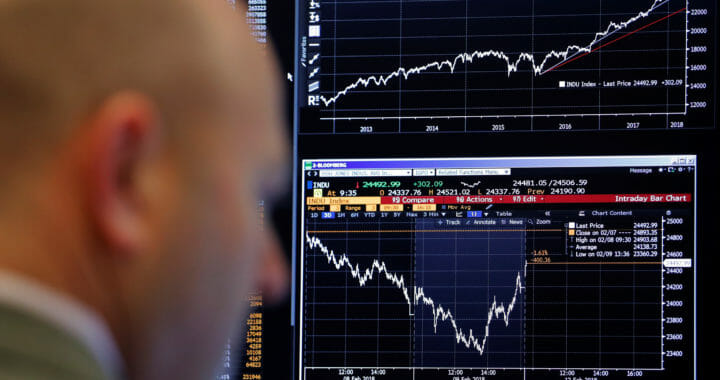We have touched an intraday 20% decline in the S&P 500 that many associate with bear market territory. We also hit a bear market on the Dow Jones Industrial Average at Wednesday’s close. Typical metrics for a market bottom do not apply in this very unusual situation spawned by the novel coronavirus pandemic.
First off, internal indications of oversold conditions are not reliable in these kind of extreme events. For example, we have had two days this week where 90% of the volume has been on the downside — an exceptionally rare occurrence that has usually indicated a selling climax, and a market bottom. Except this is that rare event, that black swan, that traders have come to believe may be an exception to the rule. Another example: The CBOE Volatility Index, or VIX, over 50 on an intraday basis for the last four days, is also exceedingly rare. The last time anything close to this happened was at the tail end of the financial crisis, when the VIX remained over 50 for nearly two months between October and December 2008.

Second, earnings are impossible to determine. How many times in the last few days have you heard the phrases “stocks are cheap” and “this is a buying opportunity?” Maybe, but this only has meaning if we have some sense of what earnings will be over the next couple quarters. We don’t.
So what rules of thumb might work for a trading range? Traders are increasingly looking at recession ranges for the markets. The S&P will typically see a drawdown of roughly 13% from high to low in a typical year, but in recession conditions — which are now actively under consideration by some — the S&P will typically drop 30% or more, implying another 10% downside to the markets.
Is this a reasonable assessment, or should we consider greater extremes — like the great recession, which produced a decline of 50% in the S&P from peak to trough?
Investor opinions are all over the map, but Brian Belski at BMO says no. “In my 30 years, I have endured a lot — but nothing like this fear-first + analyze later phenomenon,” he said. “That’s why recession anxiety lacks merit in our view. Fundamentals are at the mercy of fears, rhetoric and headlines.”
For Matt Maley, chief market strategist at Miller Tabak, all the talk of a “bear market” is nonsense: “A bear market is when you drop a lot, and then stay down,” he said, noting that 1987 — when the market dropped 22% in a single day in October — was not considered a bear market. “We had a one-day drop and then the market snapped back,” he said.
Maley says he would look for a deeper correction. He is watching the 200-week moving average, 2,640 for the S&P 500, which the market hit during the European crisis in 2011, and in early 2016. “If we break that level, it will considerably raise the odds that this will be a real bear market and a recession,” he told me.
What’s next? The markets are moving on three data points: oil; coronavirus headlines; and the content, size and timing of fiscal stimulus. Absent any good news on these three fronts — and there was none today — markets will drift lower.
